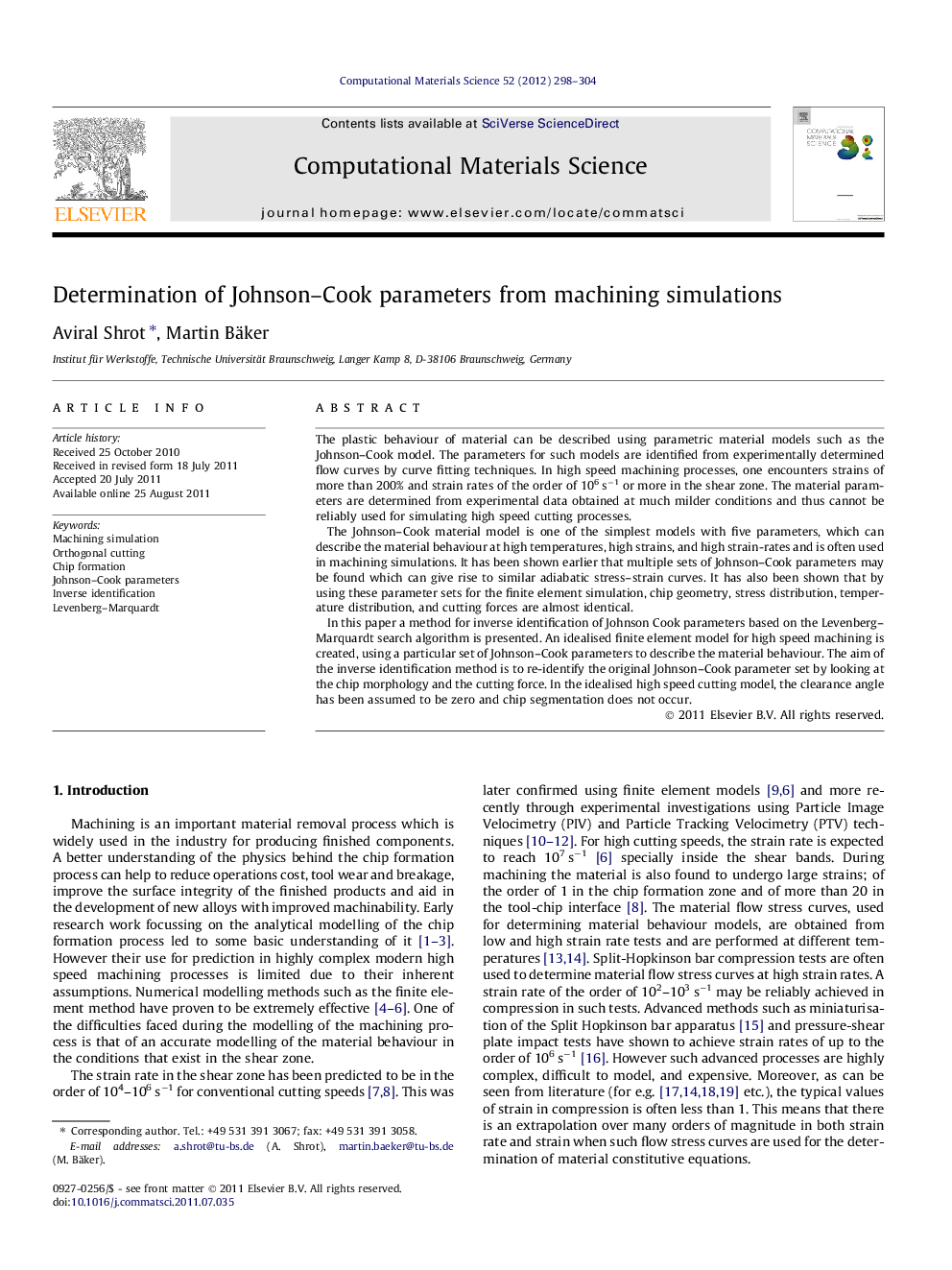| Article ID | Journal | Published Year | Pages | File Type |
|---|---|---|---|---|
| 1562088 | Computational Materials Science | 2012 | 7 Pages |
The plastic behaviour of material can be described using parametric material models such as the Johnson–Cook model. The parameters for such models are identified from experimentally determined flow curves by curve fitting techniques. In high speed machining processes, one encounters strains of more than 200% and strain rates of the order of 106 s−1 or more in the shear zone. The material parameters are determined from experimental data obtained at much milder conditions and thus cannot be reliably used for simulating high speed cutting processes.The Johnson–Cook material model is one of the simplest models with five parameters, which can describe the material behaviour at high temperatures, high strains, and high strain-rates and is often used in machining simulations. It has been shown earlier that multiple sets of Johnson–Cook parameters may be found which can give rise to similar adiabatic stress–strain curves. It has also been shown that by using these parameter sets for the finite element simulation, chip geometry, stress distribution, temperature distribution, and cutting forces are almost identical.In this paper a method for inverse identification of Johnson Cook parameters based on the Levenberg–Marquardt search algorithm is presented. An idealised finite element model for high speed machining is created, using a particular set of Johnson–Cook parameters to describe the material behaviour. The aim of the inverse identification method is to re-identify the original Johnson–Cook parameter set by looking at the chip morphology and the cutting force. In the idealised high speed cutting model, the clearance angle has been assumed to be zero and chip segmentation does not occur.
Inverse identification method for Johnson–Cook model parameters is proposed. Chip shapes and cutting forces are used to define the error function. Parameters (A, B, n) are re-identified for two different starting points. Chip shapes, cutting forces and adiabatic stress–strain curves match very well.
